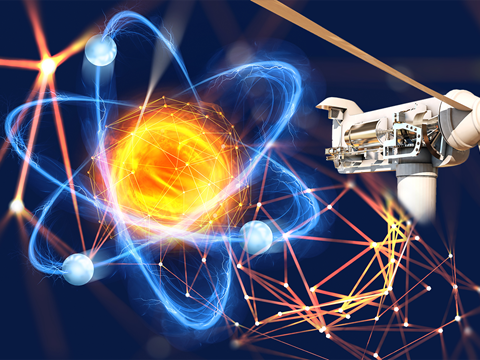Drones
Critical minerals, policy, and the energy transition
Critical Minerals and Drones
Drones have emerged as vital tools across diverse sectors, from agriculture and logistics to military and environmental monitoring, revolutionising how critical operations are conducted globally. Central to drone innovation and performance are critical minerals, essential materials underpinning structural integrity, efficient propulsion, reliable communication, precise navigation, and robust landing capabilities. Critical minerals such as aluminium, titanium, magnesium, and scandium form the structural backbone of drones, delivering the essential strength-to-weight characteristics necessary for endurance, durability, and optimal performance in demanding conditions. Advanced drone engines and propulsion systems rely heavily on materials like nickel, hafnium, and copper, providing thermal resilience and efficiency under extreme operational stresses and temperatures. Communication, electronics, and precise navigation systems depend on specialised materials like beryllium, gallium, germanium, and indium, whose unique properties ensure reliability, accuracy, and operational effectiveness. Furthermore, rare-earth elements such as neodymium, praseodymium, and dysprosium are critical for compact, high-performance electric motors that power drone flight systems, enabling greater efficiency, power density, and performance reliability. Understanding the integral role these critical minerals play in drone technologies highlights their strategic significance.
Primary Drone Design Groups
Below is a rigorous taxonomy of unmanned systems, organised into fifteen primary design groups that capture every major platform in service or development. The sequence begins with mainstream use-case categories, ranging from palm-sized recreational quadcopters to heavy-lift agricultural hexacopters, and now extends to urban-air-mobility shuttles designed for passenger transport.
The framework isolates distinctive flight architectures such as swarms, cyclorotors, and origami-morphing airframes. It also incorporates biomedical microrobots and nano air vehicles, and defines regulatory weight bands that provide instant compliance reference. Conventional wings and rotorcraft are catalogued first, followed by hybrid VTOL and experimental layouts, ensuring a logical flow from established designs to emerging concepts.
Military platforms are classified by endurance tiers, strike roles, electronic countermeasures, and support functions, aligning with NATO terminology. Dedicated sections cover key enabling technologies and concepts, including power systems, autonomy levels, soft-robotic structures, cyber-secure data links, and space and high-altitude craft.
Finally, the taxonomy addresses unconventional lift concepts, counter-UAS interceptors, and multi-modal hybrids, while flagging trends such as zero-emission propulsion and quantum navigation.
1) Drone use-cases / applications
-
Recreational / toy drones – palm-sized quadcopters under 0.25 kg for backyard flying and entry-level FPV practice.
-
Commercial / professional drones – multi-rotors from 1-5 kg with 4 K sensors for real-estate shoots, surveying, and media work.
-
Agricultural drones – hexacopters from 10-25 kg that spray from 10-30 L per sortie and map crop health with multispectral cameras.
-
Surveillance / security drones – VTOLs from 2-8 kg carrying electro-optical and infrared (EO/IR) gimbals for 30-minute perimeter patrols and crowd monitoring.
-
Racing / FPV drones – quads under 0.25 kg hitting over 120 km/hour on obstacle courses, streamed to headset goggles.
-
Delivery / logistics drones – platforms from 5-30 kg lifting from 2-10 kg parcels over 5–20 km, GPS-autonomous to rooftop pads.
-
Camera / photography / cinematography drones – gimbal-stabilised quadcopters from 0.7-1.5 kg shooting 4 K/8 K for film and broadcast.
-
Industrial / inspection & maintenance drones – collision-tolerant units from 1-6 kg with LiDAR or 30× zoom for turbines, bridges, and flare stacks.
-
Emergency response & search-and-rescue drones – thermal-imaging quads from 1-9 kg that locate victims and drop medical kits in minutes.
-
Environmental monitoring & mapping drones – fixed-wings from 2-12 kg with multispectral or gas sensors, offering 1–2 hours endurance for habitat and emissions surveys.
-
Scientific research & atmospheric sampling drones – rotorcraft or fixed-wings from 3-15 kg collecting aerosol, ozone, or magnetic data up to ~3 km AGL.
-
Construction & mining survey drones – RTK-enabled quads from 2-10 kg generating centimetre-grade point clouds and volumetric stockpile models.
-
Entertainment / drone-light-show drones – swarms of LED quadcopters around 0.2 kg each, choreographed for large-scale aerial animations.
-
Telecommunications / temporary cell-relay drones – tethered or HAPS units from 6-25 kg lofting LTE/5 G nodes to restore coverage after disasters.
2) Environment-specific drone use
-
Underwater / amphibious drones – suitcase-size ROV-UAV hybrids under 15 kg that dive to ~100 m, then hop airborne for quick hull or reef checks.
-
Indoor-navigation (GPS-denied) drones – palm-scale quadrotors under 0.25 kg using LiDAR / visual-SLAM to map warehouses, tunnels, and factories.
-
Stratospheric / HAPS drones – ultra-light solar wings from 25-75 m span loitering 18-25 km for weeks, acting as pseudo-satellite comms / ISR nodes.
-
Ground-effect drones – wing-in-ground craft skimming from 0-5 m above water, lifting from 0.1-10 tonnes with ~40% fuel savings on coastal routes.
-
High-altitude balloon-integrated drones – UAVs from 2-5 kg released from balloons at ~30 km, gliding down for atmospheric sampling or imaging.
-
Space (CubeSat) drones – modular 1-U blocks (10 × 10 × 10 cm); typical builds 3 U, 6 U, 12 U up to 24 kg for low-orbit sensing, comms, and inspection.
-
Arctic / cold-weather drones – insulated multi-rotors from 2-10 kg with heated batteries and de-icing props, reliable down to –40 °C for polar mapping and ice reconnaissance.
-
Desert / extreme-heat drones – reflective-skin VTOLs under 20 kg with active cooling, able to operate in ≥ 50 °C for pipeline patrols and wildlife surveys.
-
Confined-space / tunnel-inspection drones – caged micro-quadcopters under 1 kg (≈ 30 cm Ø) using 360° LiDAR-SLAM to map sewers, tanks, and mines.
-
Maritime surface / sea-skimming drones – corrosion-proof wing-in-ground-effect craft carrying from 20-200 kg a metre above waves for coastal cargo or anti-piracy patrols.
-
Planetary exploration (Mars / lunar rotorcraft) drones – solar helicopters around 1.8 kg with ultra-light, high-lift rotors, scouting 5-15 m above alien terrain in <1% Earth air density.
3) Specialised flight configuration drones
-
Swarm drones – coordinated fleets of 10 to 250 micro-quads (each ≤0.5 kg; total swarm mass usually ≤125 kg) that self-organise via mesh AI for area mapping, search, or saturation tactics.
-
Biomimetic / bio-inspired drones – from 0.5-5 kg bird- or fish-like flyers whose natural aerodynamics give silent, efficient surveillance.
-
Origami / morphing drones – foldables under 1 kg that re-shape mid-air to slip through gaps or switch from hover to fast cruise.
-
Ornithopter (flapping-wing) drones – mechanical birds from 0.2-2 kg flapping flexible wings for low-noise wildlife or covert ops.
-
Insect-inspired micro-drones – fingernail-scale flyers (≈ 30 g) with high-frequency wings for indoor recon and crop-pollination R&D.
-
Bat-inspired flexible-wing drones – membrane-wing craft (≈ 0.4 kg) that morph camber for agile cave, tunnel, or urban manoeuvres.
-
Cyclocopter / cycloidal-rotor drones – barrel-rotor vehicles from 1-3 kg with instant thrust-vectoring for gusty urban hover and docking.
-
Coaxial contra-rotating drones – twin-stack rotor platforms from 2-15 kg packing high lift into a compact footprint for shipboard or alpine lifts.
-
Box-wing / Prandtl-wing drones – closed-loop-wing fixed-wings from 5-20 kg that cut induced drag for long-range, low-altitude mapping.
-
Mono-copter (single-spinning-wing) drones – frisbee-style flyers (up to 0.3 kg) spinning one blade to loiter cheaply after air-drop deployment.
4) Biomedical microrobot systems
-
Magnetic-actuated swimming microrobots – helical or bead swimmers from about 2-30 µm long steered by external magnetic fields for targeted drug delivery in blood vessels.
-
DNA-origami nanorobots – programmable DNA cages from roughly 90 nm to 100 nm that open on molecular cues to release therapeutic payloads.
-
Swarming magnetic nanorobots – individual beads from 200 nm to 2 µm that self-assemble into biofilm-clearing or clot-disrupting collectives under rotating fields.
-
Helical microrobots – corkscrew propellers about 5 µm in diameter and 50 µm long, magnetically driven to drill through viscous fluids and arteries.
-
Ultrasound-activated microrobots – bubble or disk particles under 10 µm that oscillate in acoustic fields to navigate brain micro-vasculature.
-
Bio-hybrid cell-based microrobots – living bacteria- or sperm-powered carriers around 1 µm to 5 µm wide and 2-10 µm long delivering genes or drugs with natural motility.
-
Photothermal light-activated microrobots – gold-coated rods roughly 100-300 nm that swim or burrow when pulsed with near-IR lasers for precision ablation.
-
Enzyme-driven chemical micromotors – Janus particles from 300 nm to 2 µm that self-propel by catalysing hydrogen peroxide or urea in situ.
-
Soft hydrogel capsule-robots – biodegradable hydrogel spheres about 5-50 µm that swell, collapse, or release drugs under pH or temperature triggers.
5) Micro / nano-scale drones
-
Robotic insects – fingernail-sized flyers (from ≈ 200 mg to 3 g; from 3-6 cm span) that mimic insect kinematics for crop-pollination tests, covert indoor sensing, and flight-dynamics research.
-
Magnetically actuated micro-drones – wirelessly powered flappers or swimmers (from 2-20 mm long; < 50 mg) steered by external fields for lab inspection or targeted micro-manipulation.
-
Flapping-wing microrobots – units (from 0.3 g to 3 g; from 5 cm to 8 cm wingspan) beating at > 100 Hz, providing highly agile, low-noise indoor or urban reconnaissance.
-
Beetle-inspired foldable-wing drones – lightweight MAVs (from 1-5 g) that tuck 10 cm wings under 5 cm elytra, enabling pocket storage then rapid deployment in cluttered spaces.
-
Nano air vehicles (NAVs) – hummingbird-style platforms (≈ 19 g; 15 cm span) hovering indoors for ISR or flapping-efficiency research.
-
Palm-size micro quadrotors – research-favourite quads (from 120-180 g; from 12-15 cm diagonal) with hot-swappable Li-Po cells, ideal for SLAM and swarm algorithms.
-
Foldable pocket-drones – smartphone-shaped camera quads (≈ 0.14 kg; 7 × 5 × 3 cm folded) for casual aerial selfies and backpack travel.
-
Micro gliders / fixed-wings – hand-launched gliders (from 30 g to 60 g; 30 cm span) offering 25–40 minutes of endurance for lightweight mapping or air-quality sampling.
6) Weight categories (regulatory) drones
-
Sub-nano drones – craft under 0.1 kg (toy quads, micro-FPV racers) that sit below most ID-marking rules and are often flown indoors or in unrestricted airspace.
-
Nano drones – consumer camera quads under 0.25 kg (e.g., DJI Mini class) eligible for A1/Part 107 “least restrictive” operations with minimal pilot certification.
-
Micro drones – workhorse units from 0.250-2 kg used for pro filming and asset checks; fall into EASA A2 / FAA sUAS rules requiring basic competency tests and Remote-ID.
-
Mini / small drones – heavy-lift mult-irotors from 2 kg to 20 kg for crop spraying, LiDAR, or parcel drops; demand operational authorisations, insurance, and risk assessments.
-
Medium drones – platforms from 20-150 kg (cargo VTOLs, tactical ISR) needing certified airframes, BVLOS waivers, and coordinated air-traffic integration.
-
Large drones – UAVs over 150 kg (MALE surveillance, optionally piloted cargo) subject to full type-certification and controlled-airspace flight plans.
-
Extra-large / strategic drones – HALE or combat UAVs exceeding 600 kg with jet/turboprop engines, aligned to NATO Class III and operated in segregated corridors or military zones.
7) Wing / rotor configuration drones
Core wing & rotor configurations
-
Fixed-wing drones – long-endurance airframes from 1-50 kg gliding on wings for corridor mapping and environmental surveys.
-
Multi-rotor drones – versatile quad/hex/octos from 0.25-25 kg for close-range inspection, mapping, and light-payload delivery.
-
Single-rotor (helicopter) drones – high-lift UAV helicopters from 5-150 kg carrying LiDAR, logistics, or heavy sensors with efficient hover.
-
Tandem-rotor drones – fore-aft twin-rotor craft from 15-200 kg providing compact heavy-lift capability for sling loads and ag-spraying.
-
Coaxial dual-rotor drones – stacked-rotor helicopters from 2-15 kg that pack high thrust into a small deck footprint for shipboard or alpine lifts.
-
Intermeshing / synchropter drones – overlapping-blade rotorcraft from 25-150 kg offering stable hover and tail-rotor-free control in tight sites.
Hybrid VTOL (lift + cruise)
-
VTOL drones – tail-sitter or lift-plus-cruise craft from 3-100 kg switching smoothly between vertical hover and fast fixed-wing transit.
-
Quad-plane drones – fixed-wings with four lift rotors from 3-60 kg for survey, delivery, and mapping where runways are absent.
-
Tilt-rotor / tilt-wing drones – pivot-rotor platforms from 10-300 kg enabling runway-free cargo, medevac, or offshore supply flights.
Novel / experimental layouts
-
Cyclorotor drones – cylindrical-rotor craft from 1-3 kg with instant thrust vectoring for gusty urban hover and precision docking.
-
Gyroplane / autogyro drones – autorotation flyers from 5-50 kg needing only a short strip and delivering efficient loiter for pipeline patrols.
-
Stopped-rotor / gyrodyne drones – rotor-wing hybrids from 20-80 kg that take off like helicopters, lock blades, and dash like planes.
-
Annular-wing / ring-wing drones – circular-wing flyers from 1-20 kg providing gust tolerance and compact landing decks for ship or rooftop ops.
8) Drone military classification
A. Weight / endurance classes (baseline ISR, smallest to largest)
-
Class I tactical drones – fixed-wing or VTOL ISR platforms up to 150 kg, 6-15 hours endurance for platoon- and company-level reconnaissance.
-
Class II tactical drones – larger UAVs from 150-600 kg, 150 km+ range with 12-24 hours loiter for brigade-scale surveillance or light strike.
-
Class III strategic drones – jet or turboprop UAVs over 600 kg, carrying 250-1,000 kg payloads on multi-day, satellite-linked ISR or strike missions.
-
MALE drones – medium-altitude long-endurance craft from 1,000-2,000 kg, 3-9 km altitude, 24-36 hours on-station (e.g., MQ-9 class).
-
HALE drones – high-altitude long-endurance platforms over 2,000 kg, operating 18-20 km up for 36-72 hours of wide-area SIGINT or climate monitoring.
B. Kinetic / strike systems (reusable to attritable)
-
Loitering munition ("kamikaze") drones – expendable delta-wing or quadcopter weapons from 3 kg to 30 kg, 0.5-6 hours cruise before diving onto targets.
-
Armed (gun-equipped) drones – UAVs from 1 kg micro-quads to 150 kg tactical platforms that deliver reusable, remote-controlled firepower.
-
Attritable / “loyal-wingman” drones – jet-powered UCAVs from 450 kg to 3,000 kg flying with crewed fighters, carrying sensors or AAMs at loss-tolerant cost.
C. Electronic & countermeasure systems
-
Electronic-warfare / decoy drones – turbojet cruise-form UAVs from 100-300 kg (MALD class) that jam radars, spoof SAM batteries, or lure missiles.
-
Counter-UAS interceptor drones – agile multi-rotors from 5-25 kg armed with nets, tethers, or RF jammers to disable hostile small drones.
D. Support & training systems
-
Cargo-resupply drones – VTOL or powered-glider airframes from 90-600 kg lifting 30-300 kg of supplies to frontline units, then returning.
-
Aerial-target drones – recoverable or expendable jets from 50-600 kg that replicate enemy aircraft or missiles for live-fire training and SAM calibration.
9) Soft / compliant robotics drones
-
Soft aerial manipulators – multi-rotors from 2-10 kg fitted with pneumatically actuated silicone grippers that grasp fruit, cables, or debris without damaging them.
-
Inflatable-structure drones – impact-safe quadcopters from 0.5-5 kg whose air-filled frames deflate for backpack storage and bounce off obstacles during indoor inspection.
-
Variable-camber compliant-wing drones – shape-morphing fixed-wings from 1-20 kg that bend their trailing edges in flight for 20% better lift-to-drag during long range surveys.
-
Soft biodegradable drones – one-use paper or starch-polymer craft from 0.05-0.5 kg that disperse sensors or seeds, then harmlessly degrade in weeks.
-
Shape-memory-alloy-framework drones – foldable MAVs from 0.3-3 kg whose nickel-titanium spars snap back to pre-programmed shapes after collisions.
-
Electro-active-polymer-skin drones – research prototypes from 0.2-2 kg with skins that ripple for active camber control or silent pitch trim.
-
Self-healing elastomeric-structure drones – rugged quadcopters from 0.5-5 kg whose silicone frames re-bond micro-cracks within minutes, extending field life.
10) Drone power-system categories
-
Battery-electric drones – lithium-ion multi-rotors from sub-0.25-25 kg workhorses, giving 15 min to 45 min of quiet, zero-emission flight for filming, mapping, and inspection.
-
Hybrid-powered (ICE + electric) drones – petrol-electric VTOLs from 10-150 kg that mix small engines with batteries for 2-6 hours missions over long survey lines or cargo routes.
-
Internal-combustion-only drones – gasoline or heavy-fuel fixed-wings from 15-250 kg achieving 6-24 hours endurance for maritime patrols and tactical ISR.
-
Hydrogen fuel-cell drones – zero-emission multi-rotors or wings from 5-50 kg running 3-12 hours on compressed H₂ for pipeline checks and environmental sampling.
-
Solar-powered drones – ultra-light HAPS wings spanning 5-75 m, under 70 kg that harvest daylight for days- to months-long stratospheric comms or climate sensing.
-
Tethered (cable power/data) drones – multicopters from 3-30 kg fed by ground cables, hovering 24/7 at 50–120 m for security overwatch or pop-up cell towers.
-
Nuclear / RTG drones – conceptual HALE craft over 600 kg using radioisotope generators for months-long polar, deep-space, or disaster-zone surveillance.
-
Laser- / microwave-beamed-energy drones – proof-of-concept quadcopters from 1-5 kg kept aloft indefinitely by ground or airborne power beams for secure comm relays.
-
Flywheel / mechanical-storage drones – lab-scale rotors from 0.5-3 kg storing 100-500 Wh in carbon flywheels for high-power bursts during close-range inspections.
11) Control / autonomy type drones
-
Manual / remote-control drones – pilot steers every move over a 2.4 / 5.8 GHz link; spans hobby racers under 0.25 kg to pro multi-rotors up to 25 kg flown within visual line-of-sight.
-
Semi-autonomous drones – autopilot holds altitude and waypoints while a pilot handles take-off or landing; common on prosumer platforms from 0.5-20 kg.
-
Fully autonomous drones – end-to-end auto launch, mission, and recovery on craft from 1-150 kg; rely on GNSS, LiDAR-SLAM, and detect-and-avoid to meet ASTM F3548.
-
Optionally piloted vehicles (OPVs) – crewed airframes retrofitted for remote or auto mode, about 500-5,000 kg, used for cargo or ISR in dull-dirty-dangerous sorties.
-
Edge-AI / onboard real-time-processing drones – quads 0.250-15 kg running Jetson-class chips for instant target tracking, collision avoidance, and on-board analytics without cloud links.
-
Collaborative swarm-intelligence drones – self-organising fleets of 10-250 micro-UAS that share a mesh network to divide tasks and avoid collisions.
-
Human-in-the-loop / supervisory-autonomy drones – autonomy flies; operator approves high-level actions, typical for delivery VTOLs 3-30 kg seeking regulatory acceptance.
-
BVLOS-certified-autopilot drones – platforms 2-150 kg equipped with ADS-B or radar-based detect-and-avoid, cleared for flights beyond visual line-of-sight under FAA/EASA waivers.
12) Morphing / transformative drones
-
Modular shape-shifting drones – plug-and-play airframes from 1-10 kg whose arms, sensor pods, or wing panels swap out in minutes for cargo lift, mapping, or ISR roles.
-
Reconfigurable multi-configuration drones – hinging structures from 2-15 kg that pivot between quad-rotor hover, biplane cruise, and coaxial lift depending on mission phase.
-
Rocket-deployed inflatable-wing drones – compact canisters around 8 kg fired to 5–20 km altitude; wings inflate to 3–5 m span for wide-area recon or comms relay.
-
Perching / climbing-transformation drones – micro-VTOLs from 0.3-2 kg with talon legs or gecko pads that land on walls, poles, or branches to save power while observing.
-
Variable-sweep-wing UAVs – jet-powered craft from 150-600 kg whose wings sweep aft for high-speed dash and forward for low-speed loiter or carrier recovery.
-
Foldable VTOL-to-fixed-wing hybrids – lift-plus-cruise drones from 3-25 kg whose rotors tilt or stow, transitioning from vertical take-off to 90-km/hour fixed-wing flight for delivery and mapping.
13) Space / high-altitude drones
-
CubeSat space-drones – modular 1 U to 12 U satellites (10 × 10 × 10 cm blocks; from 1.3 kg to 24 kg) released from rockets or the ISS to perform low-orbit imaging, formation-flying, or debris-inspection.
-
Atmospheric probes – balloon- or rocket-dropped gliders and rotors from 2-20 kg that sample wind, ozone, or aerosols while descending from 30-60 km altitude.
-
High-Altitude Platform Stations (HAPS) – ultra-light solar wings spanning 25-75 m, weighing 50-600 kg; loiter 18-25 km for weeks as pseudo-satellite telecom or ISR nodes.
-
Mars rotorcraft (e.g., Ingenuity) – solar helicopters from 1-5 kg with oversized carbon rotors, scouting 5-15 m above thin Martian air for terrain imaging and rover pathfinding.
-
Lunar hoppers / skippers – thruster-equipped landers around 12-30 kg that make short ballistic jumps across the Moon’s surface to sample multiple sites.
-
Micro-gravity inspection drones (e.g., ISS Astrobee) – free-flying cubes about 5-10 kg using electric fans to navigate inside space stations for camera surveys and tool delivery.
-
Solar-sail / photonic-propulsion drones – CubeSat buses from 4-10 kg deploying reflective sails 20-30 m², harnessing sunlight pressure for deep-space tech demos or asteroid scouting.
14) Unconventional configuration drones
-
Ducted-fan configuration drones – shrouded-rotor multi-rotors from 1-15 kg that boost thrust and protect blades for safe urban inspection or indoor filming.
-
Tilted / tiltable-propeller-system drones – pivoting-rotor VTOLs from 5-300 kg that transition from vertical hover to 130 km/hour cruise for cargo or eVTOL air-taxi roles.
-
Snake-like / DRAGON articulated-thrust-vectoring drones – segmented craft about 1-5 kg whose ducted thrusters bend mid-air to weave through windows or place sensors in hard-to-reach spots.
-
Annular-wing / ring-wing drones – circular-wing flyers from 1-20 kg offering extra stability in gusts and compact footprints for shipboard take-off and landing.
-
Ionocraft drones – electro-static flyers weighing milligrams to a few grams that generate ionic wind with no moving parts; lab prototypes for silent indoor sensing.
-
Parafoil / kite-assisted UAVs – soft-wing gliders from 5-150 kg hauling 20-200 kg of cargo; launched and winch-recovered from trucks or ships for resupply.
-
Cyclocopter drones – cylindrical-rotor vehicles from 1-3 kg with instant thrust vectoring, enabling precision hover, side-slip, and dock manoeuvres in tight urban airspace.
15) Multi-modal / Hybrid drones
-
Crawler-drone hybrids – tracked or wheeled UGVs that unfold rotors, taking off and landing anywhere; weigh from 2-50 kg and switch between ground scouting and aerial overwatch in seconds.
-
Cable-suspended-load drones – twin or quad multi-rotors from 15-120 kg hoisting sling loads of 10-60 kg on stabilised cables for construction lifts or disaster relief.
-
Boat-plane amphibious drones – hull-bottom fixed-wings or VTOLs from 5-40 kg that skid-land on water, then take off again for coastal mapping, fish-farm inspection, or SAR.
-
Rolling / walking fly-cars (road-able eVTOLs) – electric trike or quadcar frames from 450-1,200 kg that drive on roads up to 100 km/hour, then deploy rotors for 150 km+ inter-urban hops.
-
Ball-rolling / spherical-shell drones – orb robots from 0.5-5 kg that roll through rubble, then open flip-out rotors for vertical pop-up recon inside collapsed buildings or caves.
Structural framework and mechanical components
The structural integrity of drones is crucial for their durability, stability, and performance. Several critical minerals create strong, lightweight, and corrosion-resistant materials forming the core framework and structural parts of drones. These materials withstand mechanical stresses, extreme environmental conditions, and prolonged operational wear.
-
Aluminium – Known for its exceptional strength-to-weight ratio, aluminium is essential in drone airframes and gear bodies. It significantly reduces drone weight, enhances energy efficiency, and provides excellent corrosion resistance, making it ideal for varied operational environments.
-
Titanium – Widely utilised in drone airframes, wings, and armour, titanium alloys offer outstanding strength-to-weight ratios, toughness, and fatigue resistance. This makes titanium especially suitable for drones operating in high-stress scenarios, such as military or aerospace applications.
-
Iron – Fundamental in specialised steel alloys, iron provides structural robustness, heat tolerance, and durability critical for drone engines and structural components exposed to high stress and operational demands.
-
Magnesium – Used extensively in Al-Mg alloys, magnesium contributes to exceptionally lightweight yet high-strength materials, ideal for weight-critical structural drone components, increasing flight time and performance.
-
Niobium – Employed as a microalloying element in high-strength structural steel, niobium significantly enhances toughness, weldability, and mechanical strength, crucial for drone structures subjected to dynamic loads.
-
Scandium – Alloyed with aluminium, scandium notably boosts structural strength and reduces component weight, making it ideal for drone fittings and non-structural parts that require high strength yet minimal mass.
-
Tantalum – Used in high-performance alloys, tantalum contributes to structural components that require exceptional strength, heat resistance, and protection from corrosion. Its inclusion in mechanical parts enhances durability under extreme conditions, such as high temperatures and aggressive environments, making it valuable for military-grade or aerospace drones exposed to thermal and mechanical stress.
Engine and high-temperature applications
Efficient drone operation relies significantly on engine components and materials capable of withstanding extreme temperatures, mechanical stresses, and prolonged operational demands. High-performance materials such as nickel, hafnium, and copper play vital roles in enhancing durability, thermal resilience, and efficiency, ensuring reliability even in the most demanding environments.
-
Nickel – Nickel-based alloys, including Hastelloy and NiTi, are integral to turbine and engine components because of their exceptional heat resistance, corrosion resistance, and mechanical strength. These properties make nickel alloys indispensable for sustaining reliable engine performance, particularly under extreme operational conditions involving high temperatures and intense mechanical stresses.
-
Hafnium – When integrated into nickel-based superalloys, hafnium significantly enhances the material's structural integrity, stability, and resistance to high-temperature creep deformation. By improving these key properties, hafnium substantially extends the lifespan and operational reliability of drone engines, enabling sustained performance in challenging environments.
-
Copper – Copper, utilised extensively in superalloys and copper-beryllium (CuBe) alloys, provides outstanding thermal and electrical conductivity combined with impressive mechanical robustness. These characteristics are essential for ensuring the efficient transfer of heat and electrical currents, thereby enhancing overall drone engine performance, reliability, and operational efficiency.
Communication and electronics
Robust communication and electronic systems are essential for the precise control, data transmission, and operational effectiveness of drones. These sophisticated systems demand materials with specialised characteristics to deliver stable, reliable, and high-performance capabilities even under challenging operational conditions.
-
Beryllium – Highly valued for its remarkable stiffness, lightweight characteristics, and thermal stability, beryllium alloys are ideal for constructing communication devices, integrated wiring networks, and advanced electro-optical systems. These attributes significantly contribute to the reliability and overall performance of drone communication infrastructure.
-
Gallium – Gallium plays a critical role in high-performance gallium arsenide (GaAs) and gallium nitride (GaN) compounds, essential for reliable, high-frequency operation. These materials are indispensable for drone communication systems, enabling stable signal transmission and advanced electro-optical identification technologies.
-
Germanium – Widely utilised in drone onboard electronics and inertial navigation systems, germanium offers exceptional semiconductor properties and optical clarity. Its precise electronic characteristics facilitate accurate navigation and reliable electronic operations, ensuring optimal drone performance.
-
Indium – Indium is crucial for electro-optical applications due to its superior conductivity and optical transparency. These properties enhance the efficiency and reliability of drone imaging and sensor technologies, providing critical data and improved operational awareness during drone missions.
-
Tantalum – Tantalum capacitors are widely used in drone electronics for their high capacitance, compact size, and reliable performance under extreme conditions. Their ability to deliver stable power across a wide temperature range makes them ideal for flight control systems, navigation modules, and communications equipment. Drones often operate in harsh environments, including high altitudes, intense vibrations, and temperature fluctuations, where tantalum components maintain critical functionality.
Electro-optical and navigation systems
Precision navigation and targeting capabilities are crucial for drone operations, demanding materials with advanced optical and electronic characteristics. The accuracy and effectiveness of these sophisticated systems rely on carefully selected materials to maintain performance and stability under dynamic operational conditions.
-
Beryllium – Ideal for electro-optical components, beryllium alloys provide essential rigidity, precision, and dimensional stability even under significant thermal stress and mechanical vibrations. This ensures reliable performance in navigation and targeting systems.
-
Gallium – Ideal for electro-optical components, beryllium alloys provide essential rigidity, precision, and dimensional stability even under significant thermal stress and mechanical vibrations. This ensures reliable performance in navigation and targeting systems.
-
Germanium – Offering exceptional infrared optical capabilities, germanium is indispensable for precision navigation and accurate target identification. Its superior optical clarity enhances drone operational capabilities, enabling effective performance in diverse operational scenarios.
-
Indium – Critical for advanced optoelectronic materials, indium significantly enhances device performance through excellent electrical conductivity and optical clarity. These properties are particularly valuable for improving the reliability and effectiveness of drone imaging, sensing, and navigational technologies.
Electric motors and power systems
Efficient drone propulsion and reliable power delivery depend heavily on compact yet powerful electric motors. Specialised elements such as Neodymium (Nd), Praseodymium (Pr), and Dysprosium (Dy) form strong permanent magnets that significantly improve electric motor performance, optimise power density, and enhance operational efficiency in drones equipped with electronic speed controllers (ESC).
-
Praseodymium – Praseodymium contributes to high-performance magnets by increasing strength and thermal stability, allowing electric motors to operate effectively under varied and demanding conditions.
-
Neodymium – Neodymium is widely used in producing exceptionally powerful magnets, enabling the development of compact, lightweight, and efficient electric motors essential for drone propulsion systems.
-
Samarium – Samarium is used in the form of samarium–cobalt (SmCo) magnets, valued for their high magnetic strength, thermal stability, and corrosion resistance. These properties make SmCo magnets ideal for drone motors operating in extreme temperatures or harsh environments, ensuring reliable performance in military applications where failure is not an option.
-
Dysprosium – Dysprosium enhances the high-temperature performance of neodymium-based magnets, ensuring reliable and consistent motor operation even in challenging thermal environments encountered during drone missions.
Landing systems and gears
Reliable landing gear and associated components must consistently withstand repeated mechanical shocks, impacts, and operational stresses. Materials selected for these systems must deliver durability, structural integrity, and effective shock absorption.
-
Beryllium – Leveraged in landing gear alloys, beryllium provides exceptional stiffness combined with lightweight characteristics. These qualities offer essential strength, enhance structural support, and efficiently absorb shocks and vibrations during landings, significantly improving landing system reliability.
-
Aluminium – Aluminium is ideal for landing gear structures, offering an excellent strength-to-weight ratio and superior corrosion resistance. These attributes ensure resilience, durability, and consistent performance even under repeated cycles of mechanical stress and harsh environmental conditions.
Other key components for UAVs
Drones leverage specialised materials to meet the unique requirements of advanced operational capabilities.
-
Information and Communication Technologies (ICT) – Materials optimised for high-speed, reliable data transmission and signal integrity in diverse environments.
-
Batteries – High-performance materials offering superior energy density, durability, and thermal stability to maximise operational time and safety.
-
3D Printed Components – Advanced additive manufacturing materials enabling complex geometry creation, reduced weight, and enhanced structural performance.
-
Robotics – Materials specifically engineered for robotic drone components, providing necessary flexibility, wear resistance, and electronic compatibility for precision control systems.


Critical sectors using strategic minerals

Meet the Critical Minerals team
Trusted advice from a dedicated team of experts.

Henk de Hoop
Chief Executive Officer

Beresford Clarke
Managing Director: Technical & Research

Jamie Underwood
Principal Consultant

Ismet Soyocak
ESG & Critical Minerals Lead

Rj Coetzee
Senior Market Analyst: Battery Materials and Technologies

How can we help you?
SFA (Oxford) provides bespoke, independent intelligence on the strategic metal markets, specifically tailored to your needs. To find out more about what we can offer you, please contact us.



































